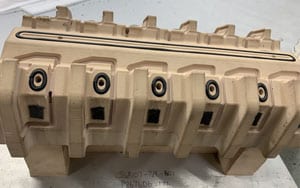
Jig manufacturing is often misunderstood and many businesses don’t fully realise the process and uses of jig manufacturing and the benefits it provides when manufacturing plastic parts and components.
Put simply, a jig is a manufacturing tool that guides and supports the component in order to produce finished products with the highest levels of accuracy which allows us to ensure that your plastic parts, pieces and components are of the highest quality.
There are a range of different jigs available, all of which have their own individual uses and benefits. The most common type of jig is the simple drill jig which guides the drill bit in order to create precise holes at desired locations.
Fixtures hold the component that is being worked on to the machine bed at a precise and fixed location. Fixtures are often unique pieces that have been created to fit a certain shape or part.
The terms ‘jig’ and ‘fixture’ are often used interchangeably; however there is a small yet clear difference between the two processes which is important to understand.
A jig is a tool that guides the cutting/machining tool in order to improve precision. A fixture, however, is a tool that holds the component being worked on to the machine bed at a precise and fixed location.
The main use of both jigs and fixtures is to help maintain a repeatable process and to improve and maintain the precision and accuracy at which your plastic parts and components are manufactured, therefore improving the overall quality of the finished product.
The main ways in which jigs and fixtures achieve this enhanced level of accuracy and precision is through the reduction of time and human error in the plastic part manufacturing process. This removal of human error is the main benefit of the jig manufacturing process and allows for plastic parts and components to be manufactured more efficiently.
 What are the advantages of using jigs and fixtures?
What are the advantages of using jigs and fixtures?As mentioned previously the main advantage of using jigs and fixtures in the manufacture of plastic parts and components is the removal of human error which in turn helps improve overall efficiency.
Furthermore, the use of jigs and fixtures allows for extremely complex plastic parts and components to be manufactured to a high degree of accuracy which has expanded the use of plastics across various sectors including the automotive, aerospace and medical sectors.
However, using jigs and fixtures provides a range of additional benefits to the plastic manufacturing process including:
Productivity is increased due to jigs and fixtures eliminating the process of marking, positioning and frequent checking. Overall, operation time during this process is also reduced by the speed, feed and depth of cut because of high clamping rigidity.
Jigs and fixtures provide interchangeability, accuracy, high repetitive quality and has proven to do so at a competitive cost.
Jigs and fixtures is a fairly independent process and doesn’t require specific skills from machine workers, although experience in working with fixtures is ideal as these require a bit more handling.
Jigs and fixtures have the ability to create large quantities of components with a high degree of accuracy.
Due to the high precision jig manufacturing involves, this essentially reduces material waste and scrap and due to the accuracy and unique shape fixtures can take, assembling parts together requires less time and labour.
Ultimately, jig manufacturing is an extension of the plastic manufacturing process, whether that is vacuum forming or injection moulding, and aims to improve the accuracy and design of your plastic parts.
Here at Ansini we use jig manufacturing and other tooling services to ensure that you are getting the highest quality plastic parts. If you require any vacuum formed plastic components for your business, please contact the team today.
If you have a question for us, or would like to discuss a specific project, please do get in touch.